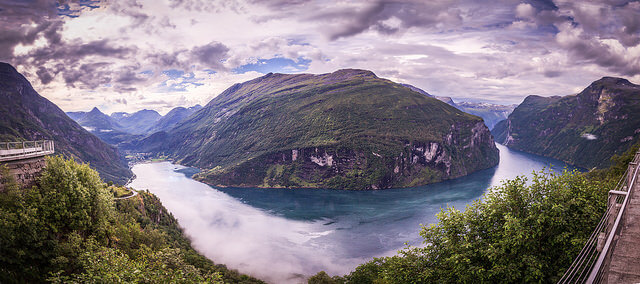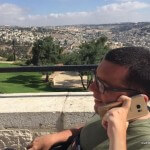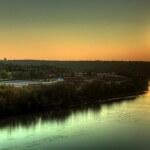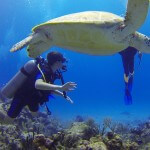Known for its stunning fjords and majestic mountains and glaciers, Norway also ranks highly for accessible travel. In the last ten years, the country has made sweeping efforts to accommodate residents and visitors with all types of special needs, and as a result, both transportation and hospitality businesses are among the most wheelchair friendly in Northern Europe. Though not all restaurants and shops are easily accessible, the friendly local people are quick to lend a hand if you need assistance, and most attractions are either built to be accessible or are happy to accommodate in any way possible.
1. Nobel Peace Center
Located in the capital city of Oslo, the Nobel Peace Center celebrates the history of the prestigious Nobel Peace Prize. Intended as a forum for discussion and education about important social issues, the Center uses a combination of multimedia and interactive visual storytelling to encourage visitors to reflect on topics related to war, peace, and resolving conflict. The Center includes two permanent exhibitions focused on the individuals and organizations that have won the Peace Prize and offers a variety of temporary exhibitions, guided tours, family activities, and events. The building and all exhibitions are fully wheelchair accessible.
2. Royal Palace and Palace Park
Less than a kilometer away from the Nobel Peace Center, the Royal Palace is the official residence of the King of Norway. Located at the center of the beautiful Palace Park, the Royal Palace offers guided tours from June through August. For the price of admission, guests can enjoy a tour in either Norwegian or English through some of the most beautiful rooms in the palace, including the Council Chamber, Great Hall, and Palace Chapel. The tour is fully wheelchair accessible, with wide doorways, accessible restrooms, and a lift to move between the two included floors.
The Palace Park offers 54 acres of trees, flowers, and other plant life, with paved or dirt paths spread throughout. It’s freely open to the public year-round except the Queen’s Park area, which is only open to the public between May and October.
3. Norwegian Olympic Museum
Lillehammer, the location of the 1994 Winter Olympics, is home to the Norwegian Olympic Museum. Part of the indoor museum at Maihaugen, the Norwegian Olympic Museum is the only museum in Northern Europe with exhibits covering the entirety of ancient and modern Olympic history. It also hosts the Norwegian Sports Hall of Fame and includes a special exhibit on the Olympic Games in Lillehammer in 1994.
The museum is designed with accessibility in mind, with wide paths and ramps providing easy access to restrooms, dining facilities, shops, and of course all areas of the exhibit halls.
4. Bryggens Museum
Boasting a number of UNESCO World Heritage sites, the city of Bergen is home to the Bryggens Museum, created in 1971 to house thousands of historical artifacts unearthed in the aftermath of a fire that burned parts of the city in 1955. Built over the remains of the oldest building in Bergen—from the first half of the 1100s—the museum’s permanent exhibition gives visitors a glimpse into life in Bergen during the Middle Ages. Bryggens Museum also plays host to numerous temporary art and themed exhibitions.
A staunch proponent of the accessibility movement in Norway, the museum is designed to accommodate guests in wheelchairs. The entrance, restrooms, and exhibits are all accessible, and ramps provide access to each floor.
5. Railway or Ship Tour of the Fjords
No exploration of Norway would be complete without a trip through the country’s iconic fjords. The two main transportation options are railway or cruise ship.
The company FjordTours offers two tours via train. “Norway in a Nutshell” is the more famous, but offers limited accessibility—FjordTours, therefore, recommends that guests with electric or otherwise non-folding wheelchairs instead choose the “Sognefjord in a Nutshell” tour. This excursion, which can be taken as a day trip or over several days, is a journey by train along Norway’s longest fjord—the second longest in the world—surrounded by the majestic beauty of scenic forests, mountains, and waterfalls. It’s necessary to specify while booking the tour that you use a wheelchair so that the organizers can book appropriate seating on the regional trains.
For an up-close experience, take a cruise through the fjords instead. Such adventures give travelers the opportunity to get close to nature—but not too close—viewing icebergs, wildlife, or the Northern Lights from the comfort of a cruise ship. Several cruise lines are specially designed for accessibility, with adapted cabins and accessible shore excursions. Make sure to contact the cruise operator to confirm accessibility options and recommendations.
Steeped in history and rich in natural splendor, Norway is a destination with many great activities to try, places to visit, and things to see. With its attitude of inclusivity, and a little preparation on your part, it’s easy to plan an unforgettable trip to this beautiful land.








Thank you